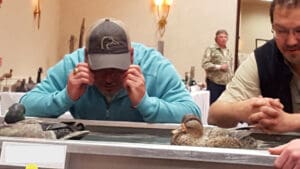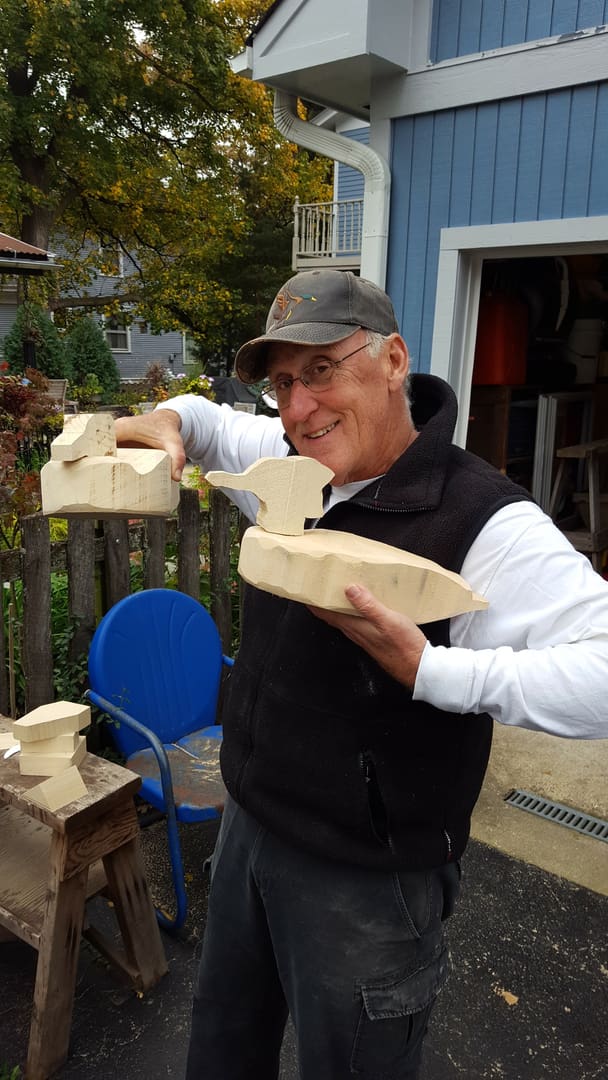Rick and the Wooden Birds
1981 - I received my first decoy blank and a book by Bruce Burk on hand-carved ducksl. I was afraid to destroy the gift, so I glued some two-by-fours together and created a canvasback half duck. It worked out okay, so my adventure began. For the next 5 years, I worked on my craft and carved about 25 ducks. I also had the pleasure of taking classes with Richard LeMaster. In 1987, I began building a new home in the woods of Barrington, IL. Carving was put on hold.
2015—Nearly thirty years later, I retired from Tech. Sell, a sales automation (computer-aided selling) company I founded in 1995. What a joy to dig into the back room and find all my tools and some unfinished duck bodies. I couldn't wait to smell the sawdust!
I'm happy to say that I've continued to learn and grow. The Wooden Birds have been honored with over 50 awards at competitions, including the Ward World Championships in Ocean City, Maryland. Most of my work is done by commission, but I try to have some birds available immediately. Check them out at the Duck Shop.


14 ribbons including best of show, 3 best of category 2 second-best of category, and 1 third best.
What About the Ducks?
Hand carved ducks begin with a piece of Tupelo or basswood. These are relatively soft and grain and knot-free varieties.
After cutting out the pattern on a bandsaw, the basic body shape is carved using Dremel-type grinders. First, the major feather groups are defined and then they are sanded. Then individual feathers are drawn on and outlined using a variety of grinding bits. Some birds have inlays that replicate the "primary" or wing tips. These feathers, stick out from the bird and add realism.
At this point, a carver might jump right into painting the bird and that is what is known as a smoothie, or untextured bird. Some carvers have created incredible results with just base carving and painting. Smoothies are usually actual floating decoys. Sometimes called "gunners"
I take the next step with my birds and texture and/or woodburn all the feathers. This is accomplished with small grinding bits and a Detail Master wood burner. It's a tedious process, but one that creates softness and a very realistic-looking duck. Every feather barb is raised from the surface.
Last but certainly not the least comes painting. I use acrylic paints. Layer upon layer is applied to the feathers. The thinner layers and tiny flicks of color one applies, the more depth you see in the feathers.
The question everyone asks is, "How long does it take to bring a wooden bird to life? I usually spend 50–80 hours from start to finish, depending on the size and complexity of the bird. An example of a more time-consuming duck is one with vermiculations, like a Mallard drake or Wood Duck . Thousands of tiny dots must be applied to some or all of the birds.
I strive to create realistic waterfowl. They do not have rows of perfect feathers and markings. I try to make them look like they are going about their daily activities. A little messy with tousled feathers.
Types of carvings
- Smoothie
- Partial Detail
- Full Detail Decorative or Realistic
Check out the gallery to see examples of some of my birds.






















